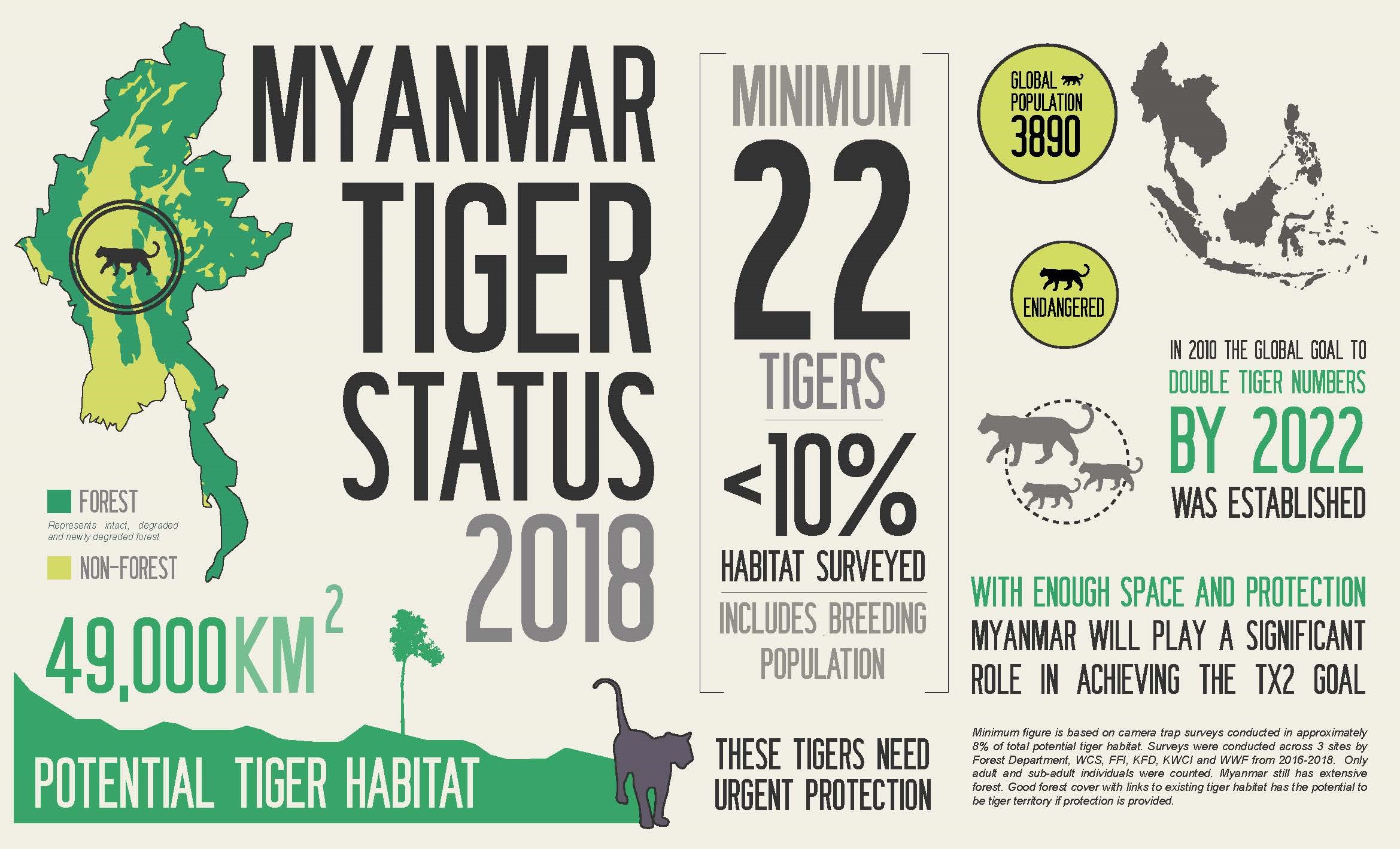The Hidden Tigers of Southeast Asia

PART 1: UNCOMMON ENCOUNTERS
Northeast of the port city of Dawei, a single, dusty road takes you inland toward the vast forested wilderness of Dawna Tenasserim, a mountainous range straddling the international border between Myanmar and Thailand. After two rickety hours bumping along in a 4x4, pausing for passing pythons and stopping to cool down in ramshackle roadside shops, a relatively flat landscape of rubber, betel and mango plantations gives way to the foothills Dawna Tenasserim. Nestled on the verge of this wild landscape is the village of Kyeik Pi Lan. Tiger encounters in this village are rare, but not unheard of.
Saw Kyar Thein is the village pastor in Kyeik Pi Lan. Sat at a teak dining table outside of his surprisingly ornate home on the village outskirts, he wears a broad smile and traditional longyi.
"It was 1991," he says, "I was walking two cows that belonged to my grandfather to find fresh pasture, just there," he adds, pointing toward a clearing in the forest.
"Suddenly the cow walking behind me began to pull. When I turned around, I saw it was wrestling with a tiger! I ran and I didn't look back. The next day, I found the cow's body on the side of the road... the tiger couldn't finish his dinner," he chuckles. When asked if he had been scared, Saw Kyar looks thoughtful,
"The elders taught us that we can live together in peace with the tiger, because the tiger is loyal. As long as we respect tiger, tiger respect us."

The men who met tigers: Pastor Saw Kyar Thein sits outside his village home as he recounts his encounters with wild tigers © WWF-Myanmar
Not everyone in Kyeik Pi Lan shares his outlook. 74-year-old Saw Phoe Zet also lives in Kyeik Pi Lan. He's a farmer. Around the same time he spotted a huge tiger - 12 feet long he estimates - as he walked beside the Nag Yant Ni stream after dark. Terrified, he pulled out his Tumee gun and shot at it.
"I don't know if I hit it," he says, "but I didn't dare to go back. The tiger was screaming loudly, and I felt very afraid. Since that day I haven't seen another. They aren't any left in this area."

The men who met tigers: Saw Phoe Zet takes a break from a bamboo construction workshop to recall the time he spotted a wild tiger in the dark © WWF-Myanmar
Though the lush green hills surrounding Kyeik Pi Lan give the illusion of forest, it is mostly agricultural land. The endless rows of white spotted rubber trees are a tell tale sign of cultivation. Myanmar's growing population, rapid development and burgeoning demand for products like rubber and palm have rendered much of Myanmar's once wild landscapes unable to support tigers, who need a large prey base and vast, unfragmented territories to survive. Deforestation in the south over the past couple of decades has been particularly extensive, prompting concern over the existence of any remaining tigers. But in 2014 something remarkable happened. An hour's walk away from the village of Kyeik Pi Lan, Saw Kyae was fishing by moonlight on the banks of the Banchuang River when he heard something in the bushes behind him.
"When I told the rest of the village what I had seen, they didn't believe me. The next day we returned to the river and that's when they knew I wasn't lying," he says.

The men who met tigers: Saw Kyae sits on the bank of the Banchuang River, where he came face to face with a wild tiger in 2014. © WWF-Myanmar
